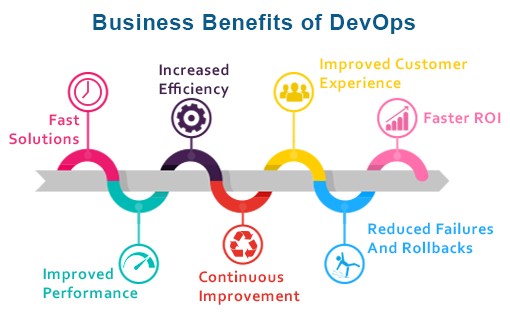In the ever-changing landscape of software development and IT operations, DevOps and automation have become powerful allies, driving efficiency, collaboration, and innovation. In this blog post, we’ll explore the symbiotic relationship between DevOps and automation and how they’re reshaping the way organizations develop, deploy, and maintain their software.
DevOps is a cultural and technical movement that aims to bridge the gap between development (Dev) and IT operations (Ops). It emphasizes collaboration, communication, and integration between these traditional functions to streamline the software delivery process. DevOps is more than just tools and processes; it’s a mindset that drives agility and continuous improvement. The role of automation in DevOps
Automation is at the heart of DevOps. It involves using tools, scripts, and workflows to automate repetitive manual tasks throughout the software development lifecycle. Automation speeds up the delivery process, reduces errors, and improves software reliability and quality.
Benefits of DevOps and Automation

- Faster time to market: DevOps practices, combined with automation, enable faster development and deployment cycles. This means organizations can release new features and updates to their software faster, gaining a competitive advantage.
- Improve collaboration: Automation ensures that processes are consistent and repeatable, minimizing misunderstandings and conflicts between these teams.
- Improve quality: Automation reduces human error, resulting in more stable and reliable software. Continuous testing and automated quality assurance help identify and resolve issues early in the development process.
- Efficiency and cost reduction: By automating manual tasks, organizations can significantly reduce operating costs and optimize resource allocation. Teams can focus on the more strategic and creative aspects of their work.
- Ability of extension: DevOps practices and automation make it easy to scale infrastructure and applications to meet changing needs. This flexibility is important for businesses experiencing rapid growth.
Common Use Cases For Automation In DevOps
- Continuous Integration (CI): Automation in CI involves automatically creating, testing, and integrating code changes into a common repository. The CI pipeline can be configured to trigger testing and builds whenever new code is committed.
- Continuous Deployment (CD): The CD pipeline automates the process of deploying code changes to production environments after a successful CI. This ensures a smooth and error-free deployment.
- Infrastructure as code (IaC): IaC enables teams to define infrastructure configuration in code and automate provisioning and management. Tools like Terraform and AWS CloudFormation can make this happen.
- Monitoring and warning: Automated monitoring systems can detect problems and send alerts to teams, allowing for quick response and problem resolution. Security analysis:
- Security testing and vulnerability scanning can be automated to ensure that code and infrastructure meet security standards.
- Challenges and best practices
- While DevOps and automation offer significant benefits, they also have challenges, such as an initial learning period and the need for cultural change within organizations.
- Encourage a culture of collaboration and open communication between teams.
- Training and development is important to ensure your team has the necessary skills.
In short, DevOps and automation are redefining how organizations build and maintain their software. By promoting collaboration and automating repetitive tasks, these practices enable teams to innovate, release software faster, and achieve greater efficiency. Adopting DevOps principles and leveraging automation tools can help organizations become more agile and competitive in today’s rapidly evolving digital landscape.
